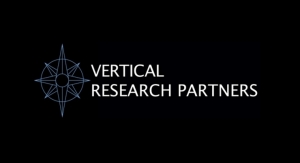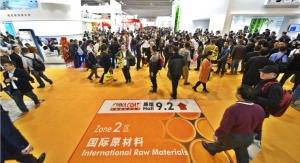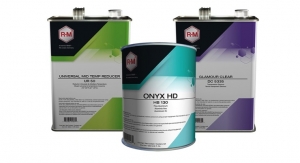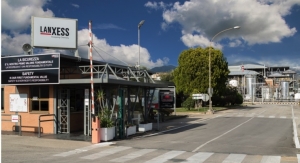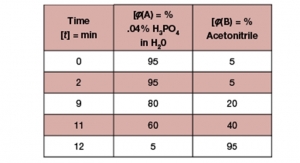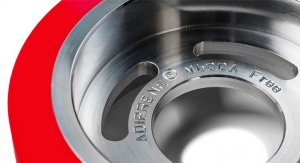08.10.18
The Microbial Control Executive Council (MCEC) is an organization made up of six of the world’s leading companies that are developing microbial control technologies: LANXESS, Troy, Lonza, Dow, BASF and ICL. Tasked with communicating the value and safe use of microbial control technologies, MCEC has been active in providing valuable and up-to-date information to industry and policy makers alike. The organization’s aim is to engage with the scientific community and wider industry to provide easy-to-digest information on microbial control and taking a responsible approach in terms of regulatory requirements.
The MCEC, a European-based organization, deals mainly with what is known as the Biocidal Products Regulation or BPR. The BPR came into force in the European Union on the 1st of September 2013 and created a harmonization of rules on making biocidal products available on the EU market, as well as setting a framework for their use. The main pillars of the Regulation include: establishing an EU list of approved active substances which may be used in biocidal products, setting out an EU wide authorization procedure for biocidal products as well as a framework for mutual recognition of authorization within the EU and finally, harmonizing the rules for selling of articles treated with biocides.
The MCEC members provide a united front when it comes to promoting a responsible approach in view of meeting and upholding the regulatory requirements set out by the EU’s authorities. The science and the industry behind microbial control technologies face a number of challenges and opportunities in light of the BPR – this an area that the MCEC is eager to address. The BPR aims to provide the highest degree of protection for humans and the environment, and as such, the appropriate development, technological advancement, and sustainable use of microbial control technologies are at the core of MCEC members’ commitment to society and the betterment of our well-being. Microbial control technologies are widely used in our homes, businesses and in our everyday lives. However, as these products are intended to control a wide variety of harmful or unwanted organisms, it is important that safeguards are followed to ensure they are used without causing harm to people, the environment or wildlife. As such, microbial control technologies are the subject of extensive research, testing and registration.
Many of the substances used for microbial control purposes are regarded as hazardous, which is unsurprising given their purpose is to control the growth of microorganisms. When handled with care and used according to the strict instructions on the packaging, biocides can be used safely to provide significant benefits to society. As microbial control technology has evolved over the years, the products used have been required to meet increasingly strict safety and environmental standards. For example, currently, the total time from submitting an application to having a formal active substance approval decision is approximately two and a half years at a minimum. Applicants must submit their dossier to ECHA (the European Chemicals Agency) which then performs a validation check and afterward a European Member State Competent Authority carries out a completeness check and evaluation within one year. The result is then presented to ECHA’s Biocidal Products Committee (BPC), which then prepares an opinion within 270 days. Finally, the European Commission adopts the decision on the approval of the active substance after approval in the BPR Member State Committee and scrutiny by the European Parliament and the Council.
Given the lengthy nature of the application process, MCEC places particular emphasis on the importance of authorities’ conclusions being strongly based on sound science. However, over the past 10-15 years, there have been various trends that have had an impact on the way in which chemicals have been regulated in general. Firstly, chemicals and chemicals legislation is no longer driven purely by science. A principle of precaution has therefore been driving activities and decisions, and a hazard-based approach has become more common in Europe to the detriment of realistic risk-based approach. Secondly, an emerging trend has been the growing desire for a ‘non-toxic environment’ and ‘zero’ exposure to alleged dangerous chemicals. In this context, the debate is evolving beyond human health much more into the environmental topics. It is the role of MCEC to provide accurate and helpful information to policy makers and the scientific community to ensure the benefits and safe use of biocides are highlighted. The MCEC has a number of different ways of communicating its message. Primarily this is carried out through online engagement and events. MCEC provides comprehensive and convenient information on how microbial-control helps us to create a healthier and safer environment, and details how microbial control improves our world through a wide range of industries and sectors e.g. disease and infection control, marine shipping, paints and coatings, wastewater management or oil and gas recovery.
These technologies have become commonplace throughout society and despite biocides being a small addition in a lengthy production process, their contribution is paramount to human development.
Please make sure to follow us on LinkedIn and subscribe to our newsletter.
The MCEC, a European-based organization, deals mainly with what is known as the Biocidal Products Regulation or BPR. The BPR came into force in the European Union on the 1st of September 2013 and created a harmonization of rules on making biocidal products available on the EU market, as well as setting a framework for their use. The main pillars of the Regulation include: establishing an EU list of approved active substances which may be used in biocidal products, setting out an EU wide authorization procedure for biocidal products as well as a framework for mutual recognition of authorization within the EU and finally, harmonizing the rules for selling of articles treated with biocides.
The MCEC members provide a united front when it comes to promoting a responsible approach in view of meeting and upholding the regulatory requirements set out by the EU’s authorities. The science and the industry behind microbial control technologies face a number of challenges and opportunities in light of the BPR – this an area that the MCEC is eager to address. The BPR aims to provide the highest degree of protection for humans and the environment, and as such, the appropriate development, technological advancement, and sustainable use of microbial control technologies are at the core of MCEC members’ commitment to society and the betterment of our well-being. Microbial control technologies are widely used in our homes, businesses and in our everyday lives. However, as these products are intended to control a wide variety of harmful or unwanted organisms, it is important that safeguards are followed to ensure they are used without causing harm to people, the environment or wildlife. As such, microbial control technologies are the subject of extensive research, testing and registration.
Many of the substances used for microbial control purposes are regarded as hazardous, which is unsurprising given their purpose is to control the growth of microorganisms. When handled with care and used according to the strict instructions on the packaging, biocides can be used safely to provide significant benefits to society. As microbial control technology has evolved over the years, the products used have been required to meet increasingly strict safety and environmental standards. For example, currently, the total time from submitting an application to having a formal active substance approval decision is approximately two and a half years at a minimum. Applicants must submit their dossier to ECHA (the European Chemicals Agency) which then performs a validation check and afterward a European Member State Competent Authority carries out a completeness check and evaluation within one year. The result is then presented to ECHA’s Biocidal Products Committee (BPC), which then prepares an opinion within 270 days. Finally, the European Commission adopts the decision on the approval of the active substance after approval in the BPR Member State Committee and scrutiny by the European Parliament and the Council.
Given the lengthy nature of the application process, MCEC places particular emphasis on the importance of authorities’ conclusions being strongly based on sound science. However, over the past 10-15 years, there have been various trends that have had an impact on the way in which chemicals have been regulated in general. Firstly, chemicals and chemicals legislation is no longer driven purely by science. A principle of precaution has therefore been driving activities and decisions, and a hazard-based approach has become more common in Europe to the detriment of realistic risk-based approach. Secondly, an emerging trend has been the growing desire for a ‘non-toxic environment’ and ‘zero’ exposure to alleged dangerous chemicals. In this context, the debate is evolving beyond human health much more into the environmental topics. It is the role of MCEC to provide accurate and helpful information to policy makers and the scientific community to ensure the benefits and safe use of biocides are highlighted. The MCEC has a number of different ways of communicating its message. Primarily this is carried out through online engagement and events. MCEC provides comprehensive and convenient information on how microbial-control helps us to create a healthier and safer environment, and details how microbial control improves our world through a wide range of industries and sectors e.g. disease and infection control, marine shipping, paints and coatings, wastewater management or oil and gas recovery.
These technologies have become commonplace throughout society and despite biocides being a small addition in a lengthy production process, their contribution is paramount to human development.
Please make sure to follow us on LinkedIn and subscribe to our newsletter.



